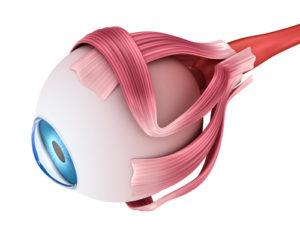
VA Compensation Appeals for Choroidopathy – Everything You Need to Know
If you developed choroidopathy during or after your military service, you may be eligible to collect veterans’ benefits. By applying and getting approved for U.S. Department of Veterans Affairs (VA) disability benefits, you can receive a monthly compensation check, plus additional VA benefits.
A VA disability advocate may be able to help you file a successful VA disability appeal to obtain choroidopathy veterans benefits. For a free disability case evaluation, call (888) 373-4722 today.
Submitting a VA Disability Appeal for Choroidopathy
Veterans who develop injuries during their service that fully or partially disable them deserve help in the form of VA disability compensation and other benefits. But VA has strict requirements to get approved for disability. You must meet two sets of standards, one involving your service the other involving your medical condition.
For you to qualify for VA disability, you must prove:
- You have a record of active duty service, service inactive duty training, or qualifying service in inactive duty training;
- A diagnosis of an injury or illness suffered as a direct result of an event in your military service.
To receive a free disability case evaluation, call (888) 373-4722 today.
VA Schedule for Rating Disabilities Listing for Choroidopathy
Choroidopathy is listed in the VA Schedule for Rating Disabilities as a ratable condition. The condition involves fluid buildup in the retina and can affect eyesight, often substantially. The exact causes of the condition are not entirely clear, but research indicates it is prevalent in people who live high-stress lives and have type-A personalities. It is no stretch to assume, then, that the rigors of military life could play a role in the development of choroidopathy.
A VA disability advocacy group will start by reviewing your military and medical records and determining the best way to move forward with a VA disability appeal. To begin the process call (888) 373-4722 today.
Filing a Disability Appeal for Choroidopathy
VA requires you to prove three things when pursuing a VA disability appeal for choroidopathy. They are:
- You have a current diagnosis of choroidopathy;
- You suffered a specific event during your military service in which you were injured or exposed to trauma (or your condition had its onset while you were in service); and
- There is a medical nexus between the identified event (or onset) and your diagnosis.
Diagnosis of Choroidopathy
You must establish that you have received a diagnosis of choroidopathy
We will review your diagnosis and medical evidence in the context of the VA rating criteria. If you need more evidence to prove you qualify, your advocate can assist you.
A Specific Event or Onset During Your Military Service
You must identify a specific event or onset during your military service.
If you are not aware of a specific event or onset during your service that led to your condition but feel that the stress and rigors of military life in general caused you to develop choroidopathy, your advocate can review your military records and if appropriate help you identify an event that best encapsulates your experience.
A Nexus Between the Two
Once you have presented your diagnosis and identified an event or onset from your military service, you need to obtain a medical link between the two via a “nexus.” In other words, you must show through medical evidence it is more likely than not that the event or onset ultimately led to your current diagnosis.
Get help from a disability advocacy group today, call (888) 373-4722.
VA Disability Benefit Scale for Choroidopathy
VA’s impairment rating system is important not only for designating choroidopathy as eligible for benefits but also for determining the amount of compensation you receive each month for your disability. The more-severe VA believes your condition is, the higher the rating you will receive. Each rating on the scale, which runs from 0 to 100%, corresponds with a monthly disability award.
The VA disability compensation rates for a single Veteran with no dependents is:
- 0% rating: $0 per month
- 10% rating: $142.29 per month
- 20% rating: $281.27 per month
- 30% rating: $435.69 per month
- 40% rating: $627.61 per month
- 50% rating: $893.43 per month
- 60% rating: $1,131.68 per month
- 70% rating: $1,426.17 per month
- 80% rating: $1,657.80 per month
- 90% rating: $1,862.96 per month
- 100% rating: $3,106.04 per month
The schedule of ratings for choroidopathy is:
- 60% rating: “Documented incapacitating episodes requiring seven or more treatment visits for an eye condition during the past 12 months;”
- 40% rating: “Documented incapacitating episodes requiring at least five but less than seven treatment visits for an eye condition during the past 12 months;”
- 20% rating: “Documented incapacitating episodes requiring at least three but less than five treatment visits for an eye condition during the past 12 months;”
- 10% rating: “With documented incapacitating episodes requiring at least one but less than three treatment visits for an eye condition during the past 12 months.”
For a Free VA Disability Case Evaluation, Call (888) 373-4722 Today
If you have received a diagnosis of choroidopathy following your military service, which you feel is due to your military service or began during service, a VA disability advocate can help you put together a compelling appeal for choroidopathy veterans’ benefits. For a free consultation, call (888) 373-4722 today.



